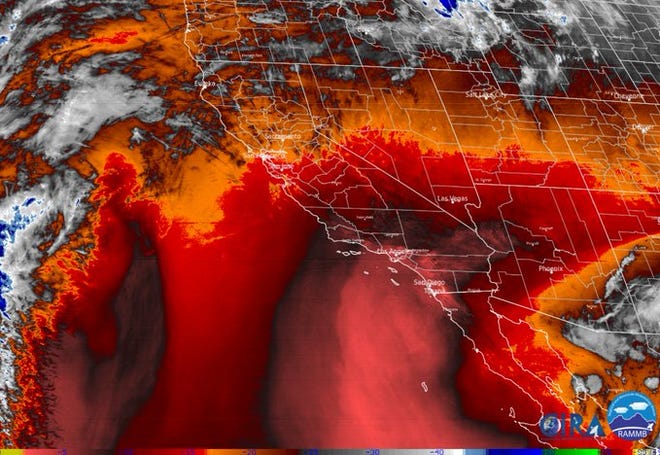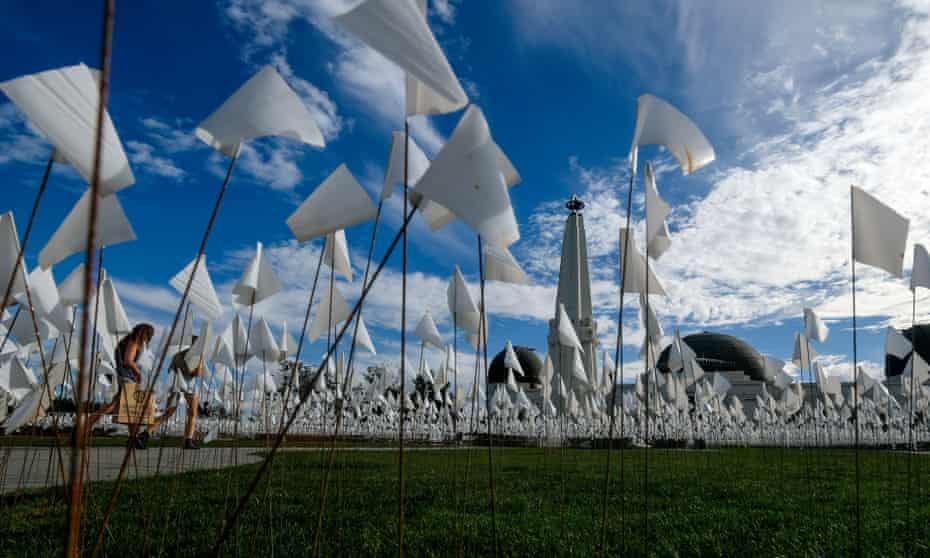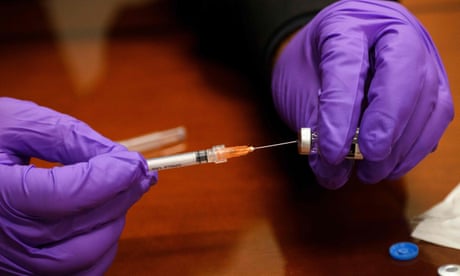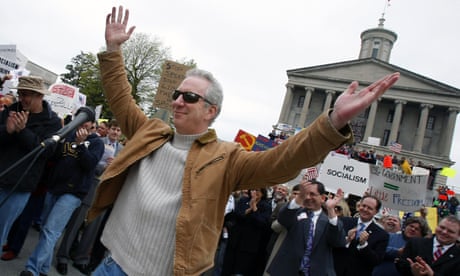By RONALD BLUM and STEPHEN HAWKINS

1 of 4
IRVING, Texas (AP) — Major League Baseball plunged into its first work stoppage in a quarter-century when the sport’s collective bargaining agreement expired Wednesday night and owners immediately locked out players in a move that threatens spring training and opening day.
The strategy, management’s equivalent of a strike under federal labor law, ended the sport’s labor peace after 9,740 days over 26 1/2 years.
Teams decided to force the long-anticipated confrontation during an offseason rather than risk players walking out during the summer, as they did in 1994. Players and owners had successfully reached four consecutive agreements without a work stoppage, but they have been accelerating toward a clash for more than two years.
“We believe that an offseason lockout is the best mechanism to protect the 2022 season,” baseball Commissioner Rob Manfred wrote in a letter to fans. “We hope that the lockout will jumpstart the negotiations and get us to an agreement that will allow the season to start on time. This defensive lockout was necessary because the players’ association’s vision for Major League Baseball would threaten the ability of most teams to be competitive.”
Talks that started last spring ended Wednesday after a brief session of mere minutes with the sides far apart on the dozens of key economic issues. Management’s negotiators left the union’s hotel about nine hours before the deal lapsed at 11:59 p.m. EST.
MLB’s 30 controlling owners held a brief digital meeting to reaffirm their lockout decision, and MLB delivered the announcement of its fourth-ever lockout — to go along with five strikes — in an emailed letter to the Major League Baseball Players Association.
“This drastic and unnecessary measure will not affect the players’ resolve to reach a fair contract,” union head Tony Clark said in a statement. “We remain committed to negotiating a new collective bargaining agreement that enhances competition, improves the product for our fans, and advances the rights and benefits of our membership.”
This stoppage began 30 days after Atlanta’s World Series win capped a complete season following a pandemic-shortened 2020 played in empty ballparks.
The lockout’s immediate impacts were a memo from MLB to clubs freezing signings, the cancellation of next week’s annual winter meetings in Orlando, Florida, and banishing players from team workout facilities and weight rooms while perhaps chilling ticket sales for 2022.
The union demanded change following anger over a declining average salary, middle-class players forced out by teams concentrating payroll on the wealthy and veterans jettisoned in favor of lower-paid youth, especially among clubs tearing down their rosters to rebuild.
“As players we see major problems with it,” New York Mets pitcher Max Scherzer said of the 2016 agreement. “First and foremost, we see a competition problem and how teams are behaving because of certain rules that are within that, and adjustments have to be made because of that in order to bring out the competition.”
Eleven weeks remain until pitchers and catchers are to report for spring training on Feb. 16, leaving about 70 days to reach a deal allowing for an on-time start. Opening day is set for March 31, and a minimum of three weeks of organized workouts have been required in the past.
Management, intent on preserving salary restraints gained in recent decades, rejected the union’s requests for what teams regarded as significant alterations to the sport’s economic structure, including lowering service time needed for free agency and salary arbitration.
“We offered to establish a minimum payroll for all clubs to meet for the first time in baseball history; to allow the majority of players to reach free agency earlier through an age-based system that would eliminate any claims of service time manipulation; and to increase compensation for all young players,” Manfred wrote. “When negotiations lacked momentum, we tried to create some by offering to accept the universal designated hitter, to create a new draft system using a lottery similar to other leagues.”
Many clubs scrambled to add players ahead of the lockout, committing to more than $1.9 billion in new contracts — including a one-day record of more than $1.4 billion Wednesday.
Two of the eight members of the union’s executive subcommittee signed big deals: Texas infielder Marcus Semien ($175 million) and Scherzer ($130 million).
“This is actually kind of fun,” Scherzer said. “I’m a fan of the game, and to watch everybody sign right now, to actually see teams competing in this kind of timely fashion, it’s been refreshing because we’ve seen freezes for the past several offseasons.”
No player remains active from the 232-day strike that cut short the 1994 season, led to the first cancellation of the World Series in 90 years and caused the following season to start late.
The average salary dropped from $1.17 million before the strike to $1.11 million but then resumed its seemingly inexorable rise. It peaked at just under $4.1 million in 2017, the first season of the latest CBA, but likely will fall to about $3.7 million when this year’s final figures are calculated.
That money is concentrated heavily at the top of the salary structure. Among approximately 1,955 players who signed major league contracts at any point going into the regular season’s final month, 112 had earned $10 million or more this year as of Aug. 31, of which 40 made at least $20 million, including prorated shares of signing bonuses.
There were 1,397 earning under $1 million, of which 1,271 were at $600,000 or less and 332 under $100,000, a group of younger players who shuttle back and forth to the minors.
A union statement claimed the lockout “was specifically calculated to pressure players into relinquishing rights and benefits, and abandoning good-faith bargaining proposals that will benefit not just players, but the game and industry as a whole. ... We have been here before, and players have risen to the occassion time and again — guided by a solidarity that has been forged over generations.”
The union has withheld licensing money, as it usually does going into bargaining; cash, U.S. Treasury securities and investments totaled $178.5 million last Dec. 31, according to a financial disclosure form filed with the U.S. Department of Labor.
Some player agents have speculated that management’s credit lines already may be pressured following income deprivation caused by the coronavirus pandemic, but the clubs’ finances are more opaque publicly than that of the union, making it difficult to ascertain comparative financial strength to withstand a lengthy work stoppage.
Manfred succeeded Bud Selig as commissioner in 2015 following a quarter-century as an MLB labor negotiator. He was unusually critical publicly of the union’s stance.
“They never wavered from collectively the most extreme set of proposals in their history,” he said, “including significant cuts to the revenue-sharing system, a weakening of the competitive balance tax, and shortening the period of time that players play for their teams. All of these changes would make our game less competitive.”
Hannah Keyser,Zach Crizer
MLB locked out its players just after midnight ET Thursday, triggering the league’s first work stoppage since the 1994 strike that canceled the World Series. It is a long expected, but still significant, escalation of the tense negotiations to craft a new collective bargaining agreement and shape the future of the sport.
The existing CBA, an expansive document that governs everything from payroll rules to travel accommodations, expired Wednesday at 11:59 p.m. ET. Minutes later, the league moved to lock out its players — a move that commissioner Rob Manfred strongly hinted at last month, reflecting the league’s preference to control the timing of a work stoppage and avoid missing games. Team owners across American sports have come to favor the approach of initiating a lockout in the offseason rather than allowing players the opportunity to gain leverage and wreak havoc on the season by going on strike when games are on the schedule.
After committing more than $1.4 billion to free agents this week in a feeding frenzy headlined by Max Scherzer’s record-setting deal with the New York Mets, the team owners chose to freeze transactions and all other major-league business. They could have continued CBA negotiations while allowing the offseason to continue under the old rules.
Manfred released a letter to fans offering an explanation for the lockout via the league's official site — which was simultaneously scrubbed of references to current players. It read, in part:
Simply put, we believe that an offseason lockout is the best mechanism to protect the 2022 season. We hope that the lockout will jumpstart the negotiations and get us to an agreement that will allow the season to start on time. This defensive lockout was necessary because the Players Association’s vision for Major League Baseball would threaten the ability of most teams to be competitive. It’s simply not a viable option. From the beginning, the MLBPA has been unwilling to move from their starting position, compromise, or collaborate on solutions.
The union also released a statement, pointing out that the lockout was not required, and calling it a "drastic measure, regardless of timing."
What does a work stoppage mean for MLB?
This is the fourth MLB lockout since Marvin Miller and the MLBPA brought collective bargaining to professional sports in 1968. Because they are timed in the offseason, none of the previous lockouts — in 1973, 1976 and 1990 — resulted in any missed games.
MLB has also experienced five strikes, the player-initiated equivalent of a lockout. Three of those — 1972, 1981 and 1994 — resulted in missing games, with the most severe being the 1994-95 strike that wiped out the World Series and cut into the following season.
In the 1994 negotiations that led to the strike, the league played on despite an expired CBA. The union went on strike in August as the league sought a salary cap to mirror other American sports. In December, MLB unilaterally implemented the cap and set off a legal challenge. Ultimately, federal Judge Sonia Sotomayor (now a Supreme Court justice) ruled that MLB had negotiated in bad faith and issued an injunction that quickly ended the strike in April 1995 by restoring the terms of the previous CBA as negotiations continued.
CBA negotiations in 2001, 2006, 2011 and 2016 were completed without work stoppages, but tension over the economic ground players have lost in the past decade have come to a head this time around.
What are MLB, players at odds over?
The labor reckoning that has now arrived has been growing on the horizon for several years, bursting into clear view over the past two seasons. The MLB Players Association has added negotiating heft in recent years, and showed increased player engagement and unity during 2020 skirmishes over the pandemic-shortened season.
Average and median salaries for major leaguers have declined since the outgoing CBA took effect in 2016, and players have grown increasingly frustrated at what they perceive as teams’ non-competitive management tactics.
The union is seeking significant changes to recalibrate the economic balance of the game, which has swung decidedly toward the team owners and calculating front offices in recent seasons. Among the players’ priorities:
Ensuring young players — who account for a mounting share of production — have a chance to earn salaries commensurate with their performance earlier in their careers.
Disincentivizing the practice of tanking, which many teams use as reason to sit out free agency for years at a time, and implementing policies that push more teams to spend competitively. That could mean reshaping the draft, revenue sharing and the competitive balance tax that teams treat like a soft salary cap.
The league has floated several proposals that address these topics, but the sides remain far apart on those core economic issues.
How did they leave the negotiations?
A vast oversimplification of the bargaining timeline thus far this year goes as follows: The union made a proposal in May, the league countered in August. The union rejected that proposal and the league made another series of proposals last week before Thanksgiving. This week, the two sides met outside Dallas, where the union was holding its annual executive board meeting. The union made its most recent economic proposal on Tuesday.
Wednesday morning, the league told the union that it would only counter if the union agreed to drop some of its key demands. In exchange for taking proposed changes to the players’ pensions off the table, the league wanted the union to take revenue sharing and reserve system changes off the table. The players rejected that request, no counter was made, and ultimately the talks were over more than nine hours before the expiration of the existing CBA.
The sides will have to continue to negotiate at some point, but as we head into a lockout, here’s where they stand on some of the key issues:
Path to free agency
Currently, players are eligible for free agency after six years of major league service. The union is concerned that this often means players are artificially underpaid during their most productive years and also that teams will manipulate a top prospect’s service clock by keeping them in the minors just long enough to get a seventh year of discounted services.
MLB: The league has proposed replacing service time with an age-based system that would grant all players free agency at the end of the season in which they surpass the age of 29 1/2. Alternatively, it’s happy with the status quo, and would point to the unprecedented $1.4-plus billion dollars handed out in free agency in deals that were finalized on Wednesday alone as a sign that the current system is working.
Union: In its latest proposal, the union laid out a system by which a player can reach free agency either by accruing six years of service time or by accruing five years of service and reaching a certain age. In the first year of the new CBA, the system would remain the same as now — six years for free agency. In the next two years, players could reach free agency by crossing six years of service time or accruing five years and being at least 30 1/2 years old. In the final two years of the CBA, it would be six years or five years of service and at least 29 1/2 years old.
The union also made a proposal designed at combating service time manipulation wherein rookies who were held down at the start of the season could still accrue a full year of service if they achieve certain performance metrics — such as a WAR threshold or winning certain awards.
Competitive balance
The current competitive balance tax threshold is $210 million, with escalating penalties for teams that run payrolls surpassing that figure in multiple consecutive seasons.
MLB: Earlier in the negotiations, the league proposed a lowered $180-million threshold with higher penalties for exceeding it. The idea was to pair that change with a payroll minimum of $100 million per club. More recently, it proposed raising the existing CBT to $214 million in 2022, getting up to $220 million by the final season of the next CBA.
The league proposed eliminating the draft penalties for teams that sign free agents who rejected qualifying offers. Previously, free agents who had been extended the qualifying offer and rejected it would cost the teams that signed them a draft pick.
Union: The union has proposed raising the threshold to $245 million in the first year of the next CBA, reaching $273 million by the final season.
The union proposed changes to the revenue-sharing system that are ostensibly designed to encourage teams to use the money received to generate further revenue and field a competitive team. The league has rejected all changes to the revenue sharing system, concerned that it would further stratify the big- and small-market teams.
Salary arbitration
Currently players reach arbitration, where they’re eligible for the first significant raises, after three years of major-league service (plus the top 22% of players with at least two years but not three full years of service).
MLB: The league likes the status quo, which is a central tenet in getting valuable production at a below market-value price. It has also proposed replacing the entire arbitration system with a WAR-based algorithm to determine salaries for players under team control. As a concession, players who are currently eligible for arbitration under the outgoing CBA would be grandfathered in and have the choice of taking the algorithm’s raises or going to arbitration.
Union: The union proposed starting arbitration eligibility after two years of major-league service. It also proposed a pool of money pulled from central revenues to reward top performers amongst players who don’t qualify for arbitration.
The league countered with a smaller pool, funded, at least partially, from revenues currently earmarked for other union benefits.
Draft
Both sides seem to agree — or at least be amenable to addressing the ways that — the current draft system incentivizes tanking by rewarding the worst teams with the top picks.
MLB: The league proposed an NBA-style lottery for the top three picks. It had previously proposed a system wherein teams couldn’t receive a top-five pick three consecutive seasons (to prevent recidivism tanking) and that proposal is still technically on the table as well as an alternative.
The league also proposed an international draft to replace the current system of international amateur free agency.
Union: The MLBPA proposed a draft order that relies on a lottery for more than just the top three picks, and also includes incentives for small-market teams that do well and penalties for teams that repeatedly finish at the bottom of the pack.
Postseason
The current playoff field is 10 teams: Three division winners per league plus two wild cards with the best records among non-division winners per league.
MLB: The league proposed a 14-team postseason structure: three division winners and four wild cards per league. The division winners with the best record would receive a bye for the three-game wild-card round. The other two division winners would get to select their opponents from the bottom-three wild-card teams, with the second-best division winner going first. The best wild-card team would face whichever of the other three wild cards was left after those selections.
Union: The union proposed a 12-team postseason structure based on divisional realignment — each league would be split into two divisions of seven and eight teams.
Among other miscellaneous proposals, the league would package a universal designated hitter with its version of the expanded postseason, and the union pitched allowing the league to put advertisement patches on uniforms to generate further revenue.









